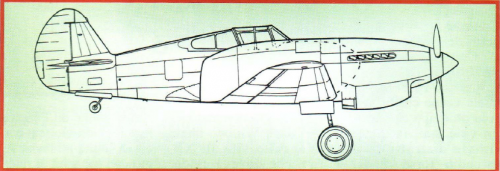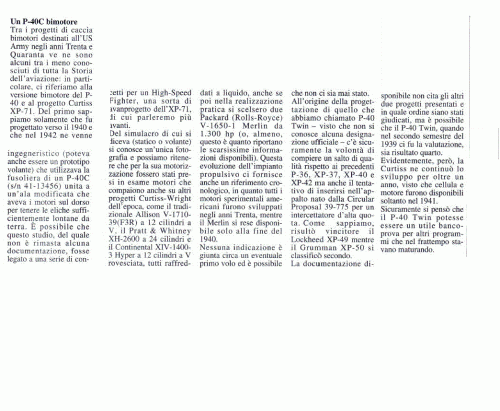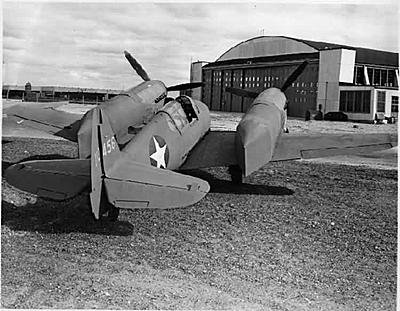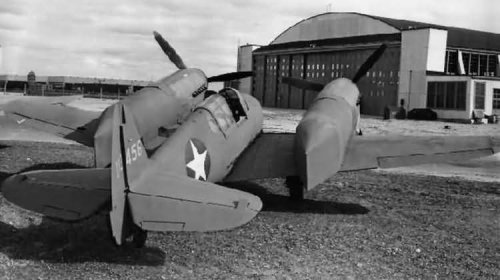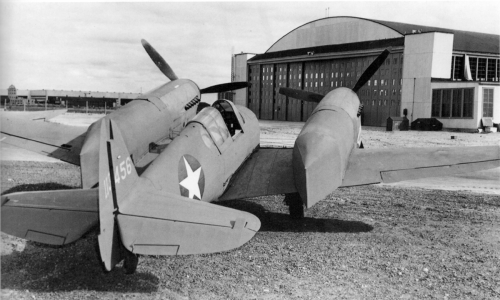A twin-engined P-40C
Amidst the twin-engined fighter projects intended for the US Army during the 30s and 40s, there are some of the lesser known in the whole History of aviation: notably, we allude to the twin engined version of the P-40 and to the Curtiss XP-71 project.
In regards to the first one, we only know it was designed around 1940 and that in 1942 [line missing] (which could have even been a flying prototype) made up of the fuselage of a P-40C (s/n 41-13456) joined to a modified wing with the engines on top, to keep the propellers sufficiently far away from the ground.
It's possible that this project, of which no documentation is left, was part of a series of concepts for a High-Speed Fighter, a sort of forerunner to the XP-71, about which we'll write later on.
In regards to the mock up we talked about before (static or flying) we only have one picture we know of, and we can presume that it would have used the same engines employed on other Curtiss-Wright projects of the era, like the traditional V-12 Allison V-1710-39 (F3R), the 24-cylinder Pratt & Whitney XH-2600 or the inverted V-12 Continental XIV-1400-3 Hyper, all of them water cooled, although for the production run were chosen two Packard (Rolls-Royce) V-1650-1 Merlin developing 1300 hp (or at least that's what relate the very few informations available). Such a progression in regards to the powerplant choice, can give us a chronological reference for the project, due to the fact that all those American experimental engines were under development during the 30s, while the Merlin became available only towards the end of 1940.
We have no known reference about its possible first flight, and it could even be there never was one.
At the roots of what we ourselves called the Twin P-40 - as no official designation for it is known - was surely the will to make a leap forward in regards to the previous P-36, XP-37, XP-40 and XP-42, but also the attempt to jump into the tender spawned by the Circular Proposal 39-775 for a high altitude interceptor. As we know, its winner was the Lockheed XP-49 while the Grumman XP-50 placed second.
The available documentation doesn't mention what the other two proposed projects were and in which order did they place, but it could be that the P-40 Twin came fourth during the evaluation trials that took place in the second semester of 1939.
It's clear, though, that Curtiss kept on developing it for over a year, seeing that both airframe and engine became available only in 1941.
For sure it was thought that the P-40 Twin could be a useful testbed for other contemporary programs.

